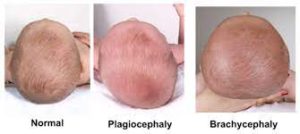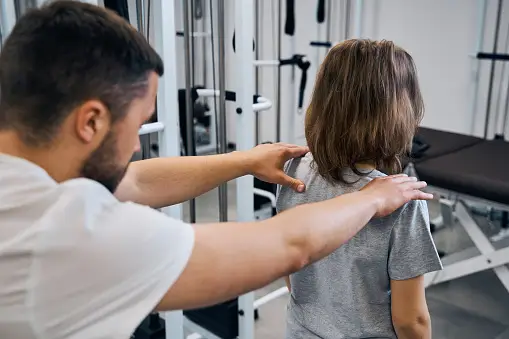The human head, like a delicate sculpture, requires proper alignment to develop harmoniously. However, many infants are susceptible to a condition known as Infant Flat Head Syndrome, also called positional plagiocephaly. This condition causes an abnormal flattening of the skull due to prolonged pressure in one area.
While there are three main types of flat head syndrome—plagiocephaly, brachycephaly, and dolichocephaly—they all share the common feature of cranial asymmetry. Addressing this condition early is vital to avoid complications such as facial asymmetry, developmental delays, and feeding challenges.
👉 Related: Newborn’s Head Shape: What Parents Should Know
What Is Infant Flat Head Syndrome?
Infant flat head syndrome (plagiocephaly) occurs when a baby’s skull develops unevenly due to prolonged pressure on one spot. Since the American Academy of Pediatrics (AAP) introduced back-sleeping recommendations to prevent SIDS, the prevalence of flat head in babies has increased.
👉 Related: Cranial Helmet for Flat Head
The 3 Types of Flat Head Syndrome
- Plagiocephaly – Flattening on one side of the skull, often linked to torticollis in babies.
- Brachycephaly – Back of the head flattens, making the skull wider.
- Dolichocephaly – Elongated, narrow head shape, sometimes seen in premature infants.

Why Does Flat Head Syndrome Occur in Infants?
Flat head syndrome in infants develops from prolonged time in one position—whether due to sleeping posture, limited tummy time, or conditions like torticollis (tight neck muscles). Premature babies and those with delayed mobility are at higher risk.
What Are the Complications From Flat Head Syndrome?
While mild cases often resolve naturally, untreated flat head syndrome may lead to:
- Noticeable cranial asymmetry
- Plagiocephaly and facial asymmetry
- Delayed motor development
- Potential psychosocial concerns in older children
👉 Related: Cephalohematoma: Causes, Treatment, Management & Healing Time
How Does a Pediatric Physical Therapist Identify Flat Head Syndrome?
A pediatric physical therapist evaluates:
- Skull shape (using cranial measurements)
- Movement and posture patterns
- Neck muscle strength and flexibility
They may also recommend referrals for cranial helmet therapy if necessary.

Does Physical Therapy Treat Flat Head Syndrome?
Yes. Physical therapy for plagiocephaly includes repositioning strategies, stretching tight neck muscles, tummy time guidance, and strengthening exercises. Parents are educated on safe sleep postures and techniques to reduce head pressure.
Best Time for Babies to See a Therapist for Flat Head Syndrome
The best outcomes occur when therapy begins between 3–6 months of age. Early treatment helps improve head shape before sutures harden. The AAP recommends therapy if repositioning doesn’t improve flattening within 6 weeks.
Schedule Your NJ Craniofacial Center Appointment Now
At NJ Craniofacial Center, our team of craniofacial specialists offers comprehensive care for infants with flat head syndrome. We provide individualized treatment plans including physical therapy, repositioning guidance, and when necessary, helmet therapy.
📞 Call today or request an appointment online to help your baby achieve healthy skull growth and development.


